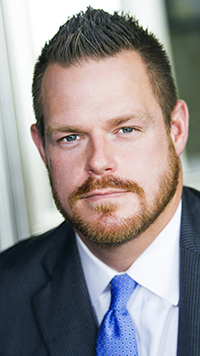Is 'Live PD' better or worse for officers and the criminal accused?

Image from Shutterstock.com.
I’ve talked with many disappointed individuals following a “ride-along” with law enforcement. The most common complaint is the lack of “action” during the experience. I’m sure there are plenty of folks with war stories to share at the drop of a hat, but most officers with civilians in their patrol unit try to stay on the safe side when possible.
Ordinary people want to know what it’s like to work in the line of fire. It’s a chance for adrenaline junkies to get their kicks vicariously. Perhaps that’s why shows like A&E’s Live PD have gained a fan base and loyal following. I haven’t watched that show specifically, and I really have no desire to, as I don’t view the genre in a positive light. Consequently, I can’t comment on the merits of the series or how “true to life” the production comes across.
Regardless, the series has been following the Oklahoma Highway Patrol over the last year, and my job as an Oklahoma criminal defense attorney puts me in contact with that agency on a somewhat regular basis. A recent conversation with other defense attorneys in my state led me to question the show’s consequences for the legal system and those subject to the same.
Law enforcement recorded live
You’d be hard-pressed to find someone unaware of the “law enforcement reality television” genre. Cops has been on air since March 1989, and after 32 seasons (and a 33rd likely to follow), most everyone is familiar with the “Bad Boys” theme song and the general format of the program. Honestly, it’d be pretty tricky to refrain from catching at least a glimpse of one of the series’ 1,000-plus episodes over the last three decades.
There have been other imitators over the years, but none has lasted as long as Cops. Shows such as LAPD: Life on the Beat, Police POV, and Live PD have tried to differentiate themselves in mostly subtle ways. Still, the blueprint remains the same: Allow some cameramen to follow law enforcement in the line of duty, capture the crazy things people do every day and exploit that footage for all its worth.
Cameramen and justice administration
In Live PD’s four seasons on air, more than one law enforcement agency has cut ties with the series. The Tulsa (Oklahoma) Police Department declined to renew its contract with the show after the Tulsa police chief argued the agreement “was not in the best interest of the department.” The city’s mayor, G.T. Bynum, supported the decision. He “felt the presence of a television camera crew served as a distraction to [their] officers in the field.”
Even though the Tulsa Police Department initially parted ways with Live PD, the city ultimately brought the show back to its community. Bynum, though, said his approach to the situation changed once he was able to appreciate how much the department’s training staff “values the footage from the show as it allows them to teach from real-life scenarios at our academy.”
Bynum was likely more truthful with his first critique than his subsequent endorsement. After all, research has shown that most people act differently when the cameras are rolling. The Hawthorne Effect has been tested in one form or another for almost 100 years now, so we are well aware of what happens when subjects know they are being observed or studied.
Officers might become overly sensitive to how they are portrayed on video, creating situations where false bravado leads to dangerous situations. Others may argue, though, that cameras focused on law enforcement are beneficial; cops are more likely to be on their best behavior when documented. That might be true, especially if those video records were readily available.
An everlasting record
More recently, the Williamson County Sheriff’s Department in Georgetown, Texas, cut ties with Live PD for different reasons than Tulsa stated. The county leaders and the individuals who live there thought the series portrayed them in a negative light. One of the residents of the Texas county put it best: “We are ruining people’s lives by seeing them on their weakest day, and that doesn’t need to be broadcast.”
Perhaps more importantly, there was a lack of accountability on the part of the series. According to Williamson County District Attorney Shawn Dick and local defense attorneys, the contract with the series gave the production company the rights to all video they recorded. Moreover, the agreement allowed them to destroy the footage within 30 days of filming.
Concerns over the potential destruction of evidence ultimately led to a removal of the cameras. Dick remarked he “had assumed the footage was available if someone wanted to get it,” and that he “didn’t realize” that the footage was “being destroyed.”
This conundrum creates a seriously unfair duality. The criminally accused may have no opportunity to see the entirety of the footage surrounding their arrest, search, etc., if it is destroyed. But the edited portions of the footage will remain for all eternity if that individual was unlucky enough to get featured on a Live PD episode that aired … even if they were never convicted of a crime.
Reasonable access to reasonable doubt
The vast majority of criminal cases are settled out or dismissed before they ever get to an actual trial. Multiple factors go into that equation, but that’s a discussion for another day. Still, many criminal cases come to their ultimate disposition as a result of litigation, and full access to all available and relevant evidence plays a large part in that process.
I can’t count the number of times I have felt pretty positive about my client’s criminal case, only to receive something from the prosecution through discovery that shed new light on the facts. The same can be said for cases where I thought my client had little to no chance until that one video, image, witness statement or lab result was finally disclosed.
Different states have different discovery codes, and over the years I’ve learned from defense attorneys across the country that all discovery codes are not created equal.
Take my home state of Oklahoma, for example. From my discussions with other attorneys, it seems like Oklahoma has one of the most restrictive and prosecution-friendly discovery codes in the nation. Defense attorneys are not entitled to all evidence the prosecution intends to use at trial until 10 days before the trial begins.
Consequently, many defense attorneys use something similar to my state’s Open Records Act to accumulate as much evidence as possible as soon as possible. It’s the only way to do so without waiting on the prosecution to decide when they “feel” it’s appropriate to divulge evidence such as officer body cam and dash camera videos. The problem, though, is that only governmental agencies are subject to the Open Records Act. Live PD and its production company would not be required to comply with a request for footage.
Some may retort that since it’s legal to video record anything that happens in public, there are potentially numerous video accounts of an alleged criminal incident at any given time, so there should be plenty of video evidence. And while this is theoretically true, one has to hope law enforcement does a complete investigation that turns up potential witnesses who were at the scene and observed the incident.
Following that trail of wishful thinking leads to the additional hope that those witnesses would disclose any videos they made, thus making those videos discoverable evidence in a criminal case.
Here’s to hoping.

Adam Banner
Adam R. Banner is the founder and lead attorney at the Oklahoma Legal Group, a criminal defense law firm in Oklahoma City. His practice focuses solely on state and federal criminal defense. He represents the accused against allegations of sex crimes, violent crimes, drug crimes and white collar crimes.
The study of law isn’t for everyone, yet its practice and procedure seems to permeate pop culture at an increasing rate. This column is about the intersection of law and pop culture in an attempt to separate the real from the ridiculous.



